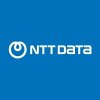


i
Hexaware Technologies
Filter interviews by
Hexaware Technologies AWS Devops Engineer Interview Questions, Process, and Tips
Hexaware Technologies AWS Devops Engineer Interview Experiences
1 interview found
I applied via Naukri.com and was interviewed in Apr 2024. There was 1 interview round.
(4 Questions)
- Q1. Share Your experience on Creating AWS resources. GUI or using IAC tool?
- Ans.
I primarily use IAC tools like Terraform to create AWS resources for consistency, version control, and automation.
I prefer using IAC tools like Terraform for creating AWS resources as it allows for infrastructure as code, version control, and automation.
Using IAC tools ensures consistency in resource creation across environments.
GUI can be useful for quick prototyping or exploring AWS services, but IAC is more efficien...
- Q2. Have you got any issues in pod, while creating or monitoring pods in the kubernetes cluster?
- Ans.
Yes, I have faced issues while creating or monitoring pods in a Kubernetes cluster.
One common issue is pods getting stuck in a pending state due to resource constraints or scheduling issues.
Another issue is pods crashing frequently due to misconfigured settings or incompatible container images.
Monitoring pods can be challenging, especially when dealing with a large number of pods and trying to track their health and pe...
- Q3. What are use of Versioning in S3? Have you got any issues in working using S3?
- Ans.
Versioning in S3 allows for preserving, retrieving, and restoring every version of an object stored in a bucket.
Enables recovery from unintended user actions or application failures
Helps in maintaining different versions of objects for audit or compliance purposes
Prevents accidental deletion or overwriting of objects
Useful for tracking changes and rolling back to previous versions if needed
- Q4. What are the Devops tools, you have experience on?
- Ans.
I have experience with various DevOps tools including Jenkins, Docker, Ansible, and Terraform.
Jenkins
Docker
Ansible
Terraform
Interview Preparation Tips
Skills evaluated in this interview
What people are saying about Hexaware Technologies






Interview questions from similar companies

AWS Devops Engineer Interview Questions & Answers
Sutherland Global Servicesposted on 30 Nov 2022

(1 Question)
- Q1. Questions about aws cloud and tools
(1 Question)
- Q1. Self introduction and discussion about package
Interview Preparation Tips
Internship is the best for freshers, because We can understand Full fill knowledge about companies

(1 Question)
- Q1. Questions on Network Part

I applied via Naukri.com and was interviewed in Sep 2023. There were 3 interview rounds.

(3 Questions)
- Q1. Jenkins devops tools sonar nexus
- Q2. Aws cli questions python questions
- Q3. Kubernetes pod creation teplicatset events in kubernetes ingress controller
- Ans.
Kubernetes pod creation and replicaset events in Kubernetes Ingress controller.
Pod creation involves defining a pod specification in a YAML file and using 'kubectl create' command to create the pod.
Replicaset events can be monitored using 'kubectl describe replicaset' command to check for events related to the replicaset.
Ingress controller manages external access to services in a Kubernetes cluster by routing traffic b...
(3 Questions)
- Q1. Jenkins job creation image in docker
- Ans.
Creating a Jenkins job using an image in Docker
Create a Dockerfile with necessary configurations for Jenkins job
Build a Docker image using the Dockerfile
Run a Jenkins container using the Docker image
Configure Jenkins job to use the Docker image as the build environment
- Q2. Pod creation servers creation docker login
- Q3. Hakkakbankaklananbakakanannala
Interview Preparation Tips
Skills evaluated in this interview

(2 Questions)
- Q1. What is docker File ? Explain
- Ans.
Dockerfile is a text document that contains all the commands a user could call on the command line to assemble an image.
Dockerfile is used to build Docker images by specifying a series of instructions.
It includes commands like FROM, RUN, COPY, CMD, etc.
Each instruction in the Dockerfile creates a layer in the image.
Dockerfile is used to automate the process of creating Docker containers.
Example: FROM ubuntu:latest, RUN
- Q2. What is webhook & why??
- Ans.
Webhook is a method of augmenting or altering the behavior of a web page, or web application, with custom callbacks.
Webhook is a way for an application to provide other applications with real-time information.
It allows developers to receive instant notifications when a specific event occurs.
Webhooks are commonly used in automation, continuous integration, and deployment processes.
Examples include receiving notification...
Interview Preparation Tips
Skills evaluated in this interview

I applied via Recruitment Consultant and was interviewed before Oct 2019. There were 3 interview rounds.
Interview Questionnaire
3 Questions
- Q1. Since you're from Mechanical Engineering, how do you plan to make up for the knowledge that you didn't learn in college?
- Q2. During the times when you are in office but you don't have any pending tasks, how do you spend your time?
- Q3. How often do you take up new responsibilities, tasks, and technologies?
- Ans.
I am always eager to take up new responsibilities, tasks, and technologies.
I am a quick learner and enjoy challenging myself with new tasks and technologies.
I regularly attend workshops and training sessions to keep myself updated with the latest technologies.
I have taken up new responsibilities in my previous roles, such as leading a team or taking ownership of a project.
I am open to feedback and constructive criticis
Interview Preparation Tips

I applied via AmbitionBox and was interviewed before Jul 2021. There were 3 interview rounds.
Generally the aptitude maintain quick calculations and time reduce.
Coding built over technical skills
(1 Question)
- Q1. General knowledge and some technical questions been asked
Interview Preparation Tips
- Python

Interview Questionnaire
2 Questions
- Q1. What is precompilaion unit?
- Ans.
Precompilation unit is a compiled code that can be reused by multiple source files.
Precompilation unit is created by the compiler from the source code.
It contains the compiled code of header files and other dependencies.
It can be reused by multiple source files, reducing compilation time.
It is also known as precompiled header or PCH.
Example: stdafx.h in Visual Studio is a precompiled header file.
- Q2. About ur future,ur short term goal,why this company
Interview Preparation Tips
College Name: IIT Kharagpur

Software Engineer Interview Questions & Answers
Persistent Systemsposted on 15 Feb 2016
Interview Questionnaire
3 Questions
- Q1. First 50 Prime Number
- Ans.
The first 50 prime numbers are...
Start with 2, the first prime number
Check each odd number greater than 2
Use trial division to check if a number is prime
Stop when you have found 50 prime numbers
- Q2. How to sort the file in the range (hint provided)
- Ans.
Sorting a file within a range
Use a sorting algorithm like quicksort or mergesort
Read the file and store the data in an array or list
Sort the array or list within the given range
Write the sorted data back to the file
- Q3. Tell me about yourself
- Ans.
I am a passionate software engineer with experience in developing web applications using various technologies.
Experienced in developing web applications using HTML, CSS, JavaScript, and frameworks like React and Angular
Proficient in backend development with Node.js, Express, and MongoDB
Familiar with version control systems like Git and project management tools like Jira
Interview Preparation Tips
Experience: Shortlist cut was 0.0 cgpa
Tips: Need to mention Programming skill in any one of three language C , C++ ,Java
Round: Test
Experience: Test was Average, Many question were from INDIABIX.COM , computer network, operating system ,data structure, c , c++ language
Tips: Understand Data Structure and Algorithm deeply, At least read about computer networks, operating system , DBMS 3-4 times for basic good understand, refer various site
Duration: 180 minutes
Round: Test
Experience: Two question were given , we have to write the code on A4 size sheet
Tips: Deep understanding of STACK AND QUEUE
Duration: 60 minutes
Round: Technical Interview
Experience: Previous Test (2 Questions on A4 size sheet) were discussed and is there any improvement that can be done, discussed each and every step.
Tips: Comments is important using programming
present with demo example (various cases)
Round: HR Interview
Experience: Be calm and show your interest in the company,
ask question about company, what are activity other than techincal technical stuff
Tips: Smile , if possible talk in Hindi - English,Try to Make the interview in discussion
General Tips: Practice Daily , Understand Each and Every Step in Detail , Try to code in A4 size paper then computer
Skill Tips: Read Good Books , Practice Daily
Skills: Algorithms And Data Structures
College Name: IIT Kharagpur
Skills evaluated in this interview

Software Engineer Interview Questions & Answers
Persistent Systemsposted on 27 Dec 2015
Interview Questionnaire
19 Questions
- Q1. Tell me about yoruself
- Ans.
I am a passionate software engineer with experience in developing web applications and a strong background in computer science.
Experienced in developing web applications using technologies such as HTML, CSS, JavaScript, and React
Strong background in computer science with knowledge in algorithms and data structures
Passionate about learning new technologies and solving complex problems
- Q2. Tell me about your projects
- Ans.
I have worked on various projects including a web application for inventory management and a mobile app for fitness tracking.
Developed a web application using React for inventory management
Created a mobile app using Flutter for fitness tracking
Implemented RESTful APIs for communication between frontend and backend systems
- Q3. Area of interest
- Ans.
My area of interest is artificial intelligence and machine learning.
I have experience in developing machine learning models for predictive analytics.
I am interested in natural language processing and computer vision applications.
I enjoy exploring deep learning algorithms and neural networks.
I have worked on projects involving recommendation systems and image recognition.
- Q4. What are features of C++?
- Ans.
C++ is a high-level programming language with features like object-oriented programming, templates, and memory management.
C++ supports object-oriented programming concepts like encapsulation, inheritance, and polymorphism.
Templates allow generic programming and code reusability.
C++ provides low-level memory manipulation through pointers.
Standard Template Library (STL) provides a collection of classes and functions for ...
- Q5. What is Big Data?
- Ans.
Big Data refers to large and complex data sets that cannot be processed using traditional data processing methods.
Big Data is characterized by the 3Vs - Volume, Velocity, and Variety.
It requires specialized tools and technologies such as Hadoop, Spark, and NoSQL databases.
Examples of Big Data include social media data, sensor data, and financial market data.
- Q6. Write a program for reversing a string without using string function
- Ans.
Program to reverse a string without using string function
Iterate through the string from end to start and append each character to a new string
Use a loop to swap the first and last characters, then move towards the middle until the entire string is reversed
Convert the string to a character array, then swap the first and last elements until the entire array is reversed
- Q7. What is your role in final year project?
- Ans.
I was responsible for designing and implementing the project's database and backend functionality.
Designed the database schema and created the necessary tables
Implemented the backend functionality using Java and Spring framework
Collaborated with team members to integrate the frontend and backend components
Tested the application and fixed any bugs or issues that arose
Presented the project to the faculty and received pos
- Q8. What are keys in database and why do we use them?
- Ans.
Keys in a database are unique identifiers used to establish relationships between tables and ensure data integrity.
Keys are used to uniquely identify records in a database table.
Primary keys are used to uniquely identify each record in a table.
Foreign keys establish relationships between tables.
Keys help enforce data integrity and maintain consistency in the database.
Examples of keys include primary keys, foreign keys,
- Q9. What are issues in cloud?
- Ans.
Issues in cloud include security, downtime, vendor lock-in, and data privacy.
Security concerns such as data breaches and unauthorized access
Downtime and service interruptions affecting business operations
Vendor lock-in and limited flexibility in choosing cloud providers
Data privacy and compliance with regulations such as GDPR and HIPAA
- Q10. Brief introduction of your project and algorithms used in project
- Ans.
Developed a web application for online shopping using React and Node.js
Implemented user authentication and authorization using JSON Web Tokens (JWT)
Used MongoDB as the database to store user and product information
Implemented a search feature using Elasticsearch to provide fast and accurate search results
Integrated Stripe payment gateway for secure online transactions
- Q11. Flow diagram of final year project
- Ans.
The flow diagram of my final year project showcases the step-by-step process of its execution.
The flow diagram illustrates the sequence of activities and their dependencies.
It helps in understanding the overall structure and logic of the project.
Each step in the diagram represents a specific task or action.
Arrows indicate the flow of control or data between different steps.
Decision points are represented by diamond-sha...
- Q12. Why do we normalise our database?
- Ans.
Normalisation reduces data redundancy and improves data integrity in a database.
Prevents data duplication and inconsistencies
Simplifies database maintenance and updates
Improves query performance
Enforces data integrity and consistency
Follows best practices for database design
Examples: breaking down a customer table into separate tables for orders, addresses, and payments
Examples: creating a separate table for product ca...
- Q13. Tell me about yourself
- Ans.
I am a passionate software engineer with experience in developing web applications and a strong background in computer science.
Experienced in developing web applications using technologies like HTML, CSS, JavaScript, and React
Strong background in computer science with knowledge of algorithms and data structures
Familiar with agile development methodologies and version control systems like Git
- Q14. Tell me your 5 qualities so that i should hire you
- Ans.
I am a problem solver, team player, quick learner, detail-oriented, and have strong communication skills.
Problem solver - I enjoy tackling complex problems and finding innovative solutions.
Team player - I work well with others and value collaboration in achieving goals.
Quick learner - I am able to pick up new technologies and concepts quickly.
Detail-oriented - I pay attention to the smallest details to ensure high-qual...
- Q15. Do you have any engineering background
- Ans.
Yes, I have a Bachelor's degree in Computer Engineering.
Bachelor's degree in Computer Engineering
Experience in software development
Knowledge of engineering principles applied to software design
- Q16. How was your day?
- Ans.
My day was productive and challenging, with a lot of problem-solving and collaboration.
Completed a major coding project ahead of schedule
Participated in a brainstorming session with team members
Solved a tricky bug in the codebase
Attended a virtual meeting with stakeholders
- Q17. Do you have relatives in Pune? or what about your accomodation?
- Ans.
No, I do not have any relatives in Pune. I have arranged for my accommodation in a rented apartment near the office.
No relatives in Pune
Accommodation arranged in a rented apartment near the office
- Q18. Do you know about My Passion Challenge test?
- Ans.
Yes, My Passion Challenge test is a coding competition for software engineers.
My Passion Challenge test is a coding competition that evaluates the coding skills of software engineers.
It is designed to test problem-solving abilities, algorithmic thinking, and coding proficiency.
Participants are given a set of coding challenges to solve within a specified time limit.
The challenges can range from simple to complex, coveri...
- Q19. Any higher studies plan?
- Ans.
Considering pursuing a Master's degree in Computer Science to deepen knowledge and advance career.
Considering pursuing a Master's degree in Computer Science
To deepen knowledge and advance career
Examples: MS in Computer Science at XYZ University, online courses in AI and Machine Learning
Interview Preparation Tips
Experience: In this section, you will find questions from all technical subjects like data structures,design and analysis of algorithms, software testing and quality assurance , computer networks, database management , C , C++ , C# and java. The difficulty level is moderate.
For this section you can study from indiabix.com
In the 2nd section, we have to write a program and also have to follow constraints mentioned in the problem statement. Programs are based on file handling, structure and union , string operations,etc.
In 3rd round, you have to write an essay of about 10 lines. Essay topics are general issues like I had 'Traffic issues in India'.
Tips: Stick to your basics.
All the concepts should be clear.
Programs should be syntactically correct. Try to mention comments and also display output as expected. It adds up to your representation even if your logic goes wrong. :)
For essay writing round, there should be no grammatical mistakes.
Time management is very important.
Duration: 90 minutes
Total Questions: 75
Round: Technical Interview
Experience: My first technical round really went well. So I was qualified for Hr round.
But some candidates had to appear for 2 technical interviews.
Tips: Stay confident about your answers and also mention area of interest in your resume and go through your resume before going to interview. 60% of technical interview is on projects. They are really interested in ideas used in your projects. Explain all the projects in detail like which front end and back end used.
Every round is an elimination round. So give your best and stay confident.
Round: HR Interview
Experience: Hr round is also elimination round. And you should have good communication skills.
There is always backfiring so you have to be attentive and confident.
Always try to reply in a positive way.
Tips: You should read about the history of company and also the domains on which they are working and their recent projects.
Skills: Verbal Communication Skills
College Name: Jawaharlal Nehru Engineering College
Skills evaluated in this interview
Hexaware Technologies Interview FAQs
Some of the top questions asked at the Hexaware Technologies AWS Devops Engineer interview -
Tell us how to improve this page.
Hexaware Technologies Interviews By Designations
- Hexaware Technologies Graduate Engineer Trainee (Get) Interview Questions
- Hexaware Technologies Software Engineer Interview Questions
- Hexaware Technologies Executive Interview Questions
- Hexaware Technologies Senior Software Engineer Interview Questions
- Hexaware Technologies System Analyst Interview Questions
- Hexaware Technologies Associate Software Engineer Interview Questions
- Hexaware Technologies Software Developer Interview Questions
- Hexaware Technologies Graduate Trainee Interview Questions
- Show more
Interview Questions for Popular Designations
- Devops Engineer Interview Questions
- Senior Devops Engineer Interview Questions
- Devops Interview Questions
- Cloud Devops Engineer Interview Questions
- AWS Cloud Engineer Interview Questions
- AWS Cloud and DevOps Engineer Interview Questions
- AWS Solution Architect Interview Questions
- AWS Developer Interview Questions
- Show more
Hexaware Technologies AWS Devops Engineer Interview Process
based on 1 interview
Interview experience
Interview Questions from Similar Companies
Fast track your campus placements
Hexaware Technologies AWS Devops Engineer Reviews and Ratings
based on 1 review
Rating in categories
|
Senior Software Engineer
3.8k
salaries
| ₹5.5 L/yr - ₹20.1 L/yr |
|
Software Engineer
2.9k
salaries
| ₹2 L/yr - ₹10 L/yr |
|
System Analyst
2.9k
salaries
| ₹6.8 L/yr - ₹29 L/yr |
|
Technical Architect
2.1k
salaries
| ₹10 L/yr - ₹37 L/yr |
|
Senior Executive
1.9k
salaries
| ₹0.8 L/yr - ₹6.2 L/yr |

Cognizant

TCS

DXC Technology

Mphasis
- Home >
- Interviews >
- Hexaware Technologies Interview Questions >
- Hexaware Technologies AWS Devops Engineer Interview Questions
















